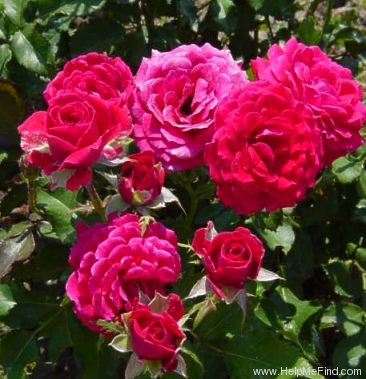|
|
'Red Garnette' rose Description

Photo courtesy of Vienna Public Gardens
ARS:
Dark red Floribunda. Registration name: Garnette
Class:
Floribunda, Florists Rose, Polyantha.
Bloom:
Dark red, lemon-yellow undertones. Garnet-red. Mild fragrance. 50 petals. Average diameter 2". Medium, very full (41+ petals), cupped bloom form. Blooms in flushes throughout the season.
Habit:
Bushy. Dark green, leathery foliage.
Height: 16" to 2' (40 to 60cm). Width: up to 2' (up to 60cm).
Growing:
USDA zone 6b and warmer. Disease susceptibility: susceptible to Mildew. Spring Pruning: Remove old canes and dead or diseased wood and cut back canes that cross. In warmer climates, cut back the remaining canes by about one-third. In colder areas, you'll probably find you'll have to prune a little more than that.
Patents:
Patent status unknown (to HelpMeFind).
|